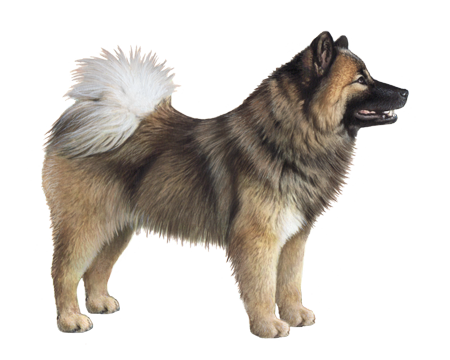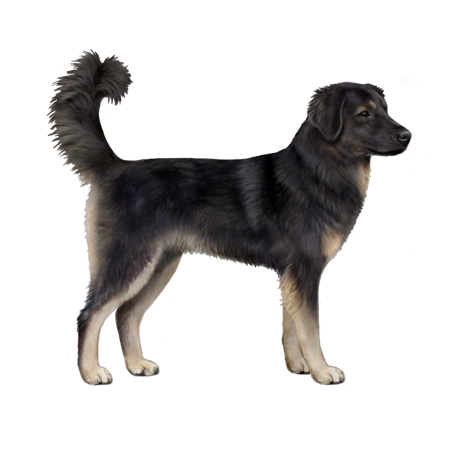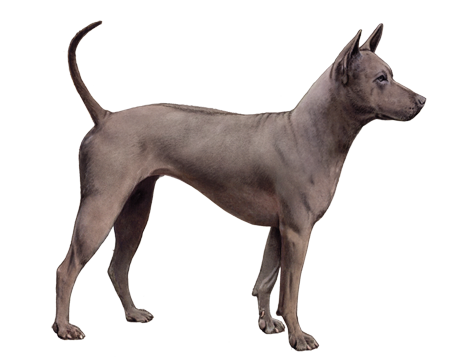
Nepalese Street Dog
Nepalese street dogs are free-roaming pups that typically congregate in cities or towns with plentiful resources. They share many basic traits with pet dogs, but they lead primarily independent lives outdoors.
Interested in discovering if your dog is a Nepalese Street Dog?
Check out Wisdom Panel's DNA tests.

Nepalese Street Dog Traits
General Appearance
Nepalese street dogs can come in all shapes and sizes. However, street dogs generally tend to be medium-sized.
Coat and Coloring
Though any combination of coat colors, patterns, and lengths is genetically possible, street dogs typically have short, brownish coats.
Distinctive Physical Traits
Nepalese street dogs don't follow a breed standard—no shared set of traits links them together. Still, common characteristics of street dogs include prick ears and pointed noses.
Nepalese Street Dog Temperament
Street dogs must learn to fend for themselves. As a result, they tend to be scrappy, intelligent, and adaptable—all skills that support independent survival. Because they've never had to rely on humans, they may be fearful or skeptical of people who have not earned their trust.


Nepalese Street Dog History
Thousands of years ago, a number of gray wolves became domesticated. Experts believe the Nepalese street dog is a direct descendant of those earliest "dogs." Unlike purebred dogs that people have developed to strengthen certain traits, Nepalese street dogs don't belong to a particular breed. Instead, they have evolved on their own in their native environment.
Hindus believe the dog is the messenger of Yamaraj—the God of death. To appease Yamaraj, they worship dogs during the Nepalese Hindu festival of Tihar. On this "Day of the Dogs," people bless and celebrate dogs and shower them with flowers and food. Despite this day of worship, many Nepalese street dogs live in unhealthy conditions and suffer inhumane treatment.
Today, thousands of street dogs exist in Nepal, with an estimated 20,000 in Kathmandu alone. Local animal welfare organizations are working to find homes for dogs, provide veterinary care, and reduce the number of dogs on the street.
Nepalese Street Dog Care
Nutrition
A Nepalese street dog's diet typically consists of whatever they can kill or find—small farm animals, scraps from trash cans, handouts from kind strangers, and so on. If you're leaving food out for a street dog, they'll benefit from commercial diets formulated for pet dogs.
Because they fend for themselves, street dogs aren't usually at risk of becoming overweight. However, if you take a street dog under your roof, keep an eye on their food intake to avoid overfeeding. Guidelines on dog food packages are a good starting point when determining daily portions.
Grooming
If you've adopted a street dog that's comfortable being handled, regular brushing and nail trims will help them look their best. Good dental hygiene is also important for any dog. Professional cleanings and at-home dental care will keep their mouths healthy and reduce the risk of related health issues.
Exercise
All dogs need exercise to stay physically and mentally fit, and street dogs are no exception. Nepalese street dogs that are on their own will get adequate exercise during their daily roaming. Pet dogs, however, need access to the outdoors to stretch their legs and get mental stimulation. Playing in a fenced yard and going for leashed walks are great ways for your dog to release energy.
Training
Street dogs are not accustomed to obeying commands from people. In fact, many may avoid close contact with humans. Before attempting a training program, start by building trust and respect with your dog. Slow and steady is the best approach to making inroads with a street dog.

Breed Group
Asian and Oceanian
The Asian and Oceanian group is comprised of breeds whose origins lie in Asia, which have spread as far as Australia, the islands of the Pacific, and the Arctic. This group is possibly the most ancient of all breed groups and were bred for a variety of purposes, including guarding, hunting, and as draft dogs.












































